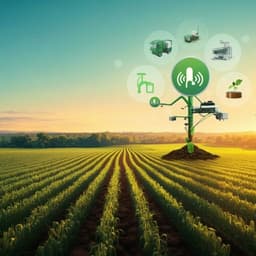
Agriculture
Impact of the degree of agricultural green production technology adoption on income: evidence from Sichuan citrus growers
Y. Liu, R. Chen, et al.
This study reveals how adopting agricultural green production technology can significantly boost the income of citrus growers in Sichuan Province, China. By examining 805 farmers, the research highlights essential factors like yield, sales price, and costs that contribute to this positive impact. This innovative work, conducted by Yuying Liu, Rubin Chen, Yufan Chen, Tinglei Yu, and Xinhong Fu, provides crucial insights for policy makers aiming to advance green agricultural practices.
~3 min • Beginner • English
Related Publications
Explore these studies to deepen your understanding of the subject.







